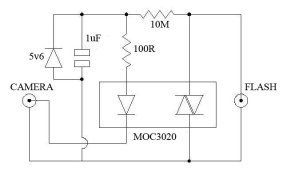Dr Croubie
Member
Hi all,
Sorry if this as been discussed before, I'm sure it would have been but I can't find it when searching.
Anyway, I'm just getting into buying myself a lighting kit, and I'm exploring all the various options.
So far all I've got is a 430EX, and have only ever used it on (and sometimes off) my 7D. If I stick with the digital and/or my EOS 3, then I can just buy a bucketload of Canon or compatible Speedlites, and be done with it.
But obviously I'm thinking about not just sticking with digital, or I wouldn't be here asking. I'd very much like to try using my other film cameras with flash, so i'd need a way to sync them all together. Whatever the lighting kit ends up being (be it flash, monolight, whatever), I'll be using the PC-Sync socket out of the camera into whatever transmitter to the lights.
Now, I've always read things like "connecting older cameras to newer flashes can blow them up", and the occasional "new cameras with old flashes too". (Although whatever lighting setup I get will be less than 5 years old, so it's old-camera-new-flash that I'm worried about)
- Is there any truth to either of these?
- Is it hotshoe only? (this I can understand, with the old-school exploding single-use bulbs)
- PC-Cord only?
- Is there a definitive date to define 'old' and 'new'?
- Is there anything that can be done to mitigate any incompatibilities? (Like a signal isolator? I'm an Electronic Engineer by day so have no problems building anything needed)
FYI, I could be using any of the following:
'Old' designs:
Asahi Pentax Spotmatic
Pentacon Six
Kiev 60
Kiev 88cm
'New' designs:
EOS 3
Mamiya 645AF
CV Bessa
Does anyone have any specific experience with any of these cameras that do/don't work with 'new' flash equipment? For 35mm I don't mind sticking to the EOS3, but in MF I'd prefer to use the 88cm for the square-format and WLF (or P6/K60), the Mamiya 645AF doesn't excite me much even though it's newer.
(ps, no need to point out the slow sync-speeds of MF, I'm already aware and I'll work around it)
Sorry if this as been discussed before, I'm sure it would have been but I can't find it when searching.
Anyway, I'm just getting into buying myself a lighting kit, and I'm exploring all the various options.
So far all I've got is a 430EX, and have only ever used it on (and sometimes off) my 7D. If I stick with the digital and/or my EOS 3, then I can just buy a bucketload of Canon or compatible Speedlites, and be done with it.
But obviously I'm thinking about not just sticking with digital, or I wouldn't be here asking. I'd very much like to try using my other film cameras with flash, so i'd need a way to sync them all together. Whatever the lighting kit ends up being (be it flash, monolight, whatever), I'll be using the PC-Sync socket out of the camera into whatever transmitter to the lights.
Now, I've always read things like "connecting older cameras to newer flashes can blow them up", and the occasional "new cameras with old flashes too". (Although whatever lighting setup I get will be less than 5 years old, so it's old-camera-new-flash that I'm worried about)
- Is there any truth to either of these?
- Is it hotshoe only? (this I can understand, with the old-school exploding single-use bulbs)
- PC-Cord only?
- Is there a definitive date to define 'old' and 'new'?
- Is there anything that can be done to mitigate any incompatibilities? (Like a signal isolator? I'm an Electronic Engineer by day so have no problems building anything needed)
FYI, I could be using any of the following:
'Old' designs:
Asahi Pentax Spotmatic
Pentacon Six
Kiev 60
Kiev 88cm
'New' designs:
EOS 3
Mamiya 645AF
CV Bessa
Does anyone have any specific experience with any of these cameras that do/don't work with 'new' flash equipment? For 35mm I don't mind sticking to the EOS3, but in MF I'd prefer to use the 88cm for the square-format and WLF (or P6/K60), the Mamiya 645AF doesn't excite me much even though it's newer.
(ps, no need to point out the slow sync-speeds of MF, I'm already aware and I'll work around it)











